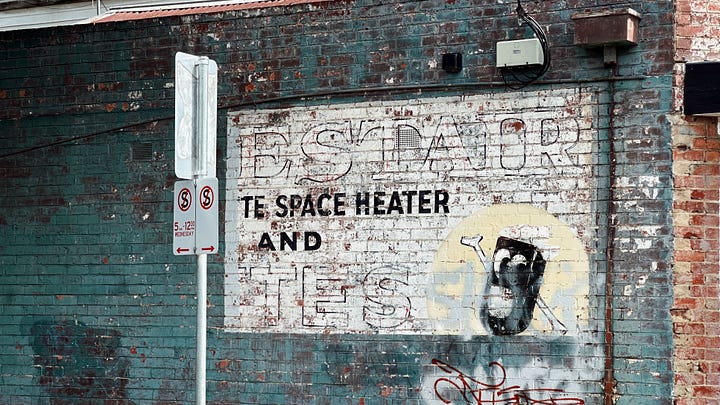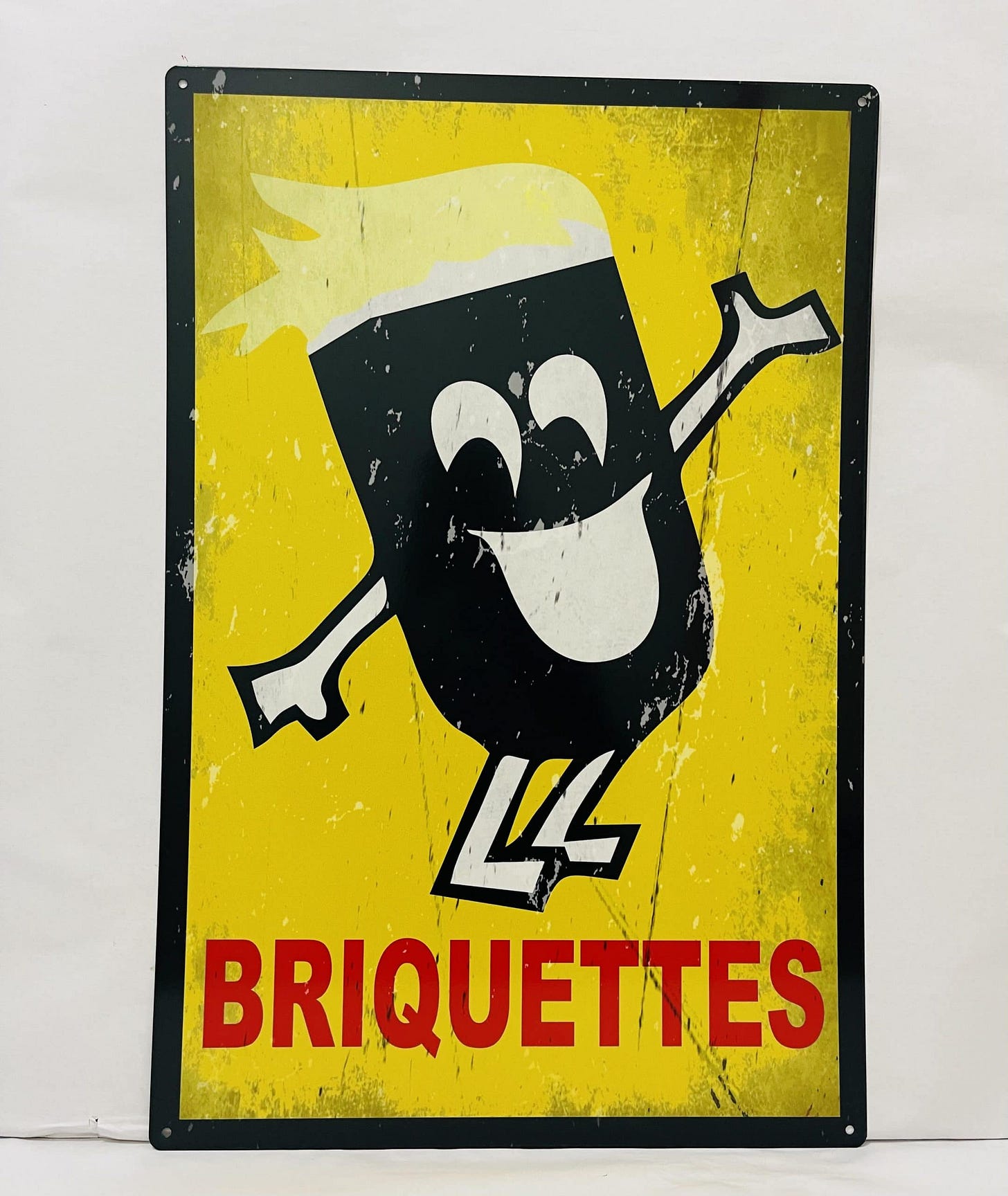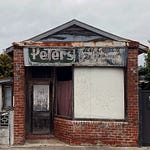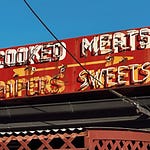Meet fossil-fuel poster-boy Burnie Briquette, the smiling face of an energy policy that poisoned the Latrobe Valley, bulldozed entire towns, and left people choking on smog.

This ghost sign in Pascoe Vale, part of an advertisement designed to make you forget that you were inhaling toxic smog for the sake of cheap energy — is one of the last remnants of the pint-sized peddler of carcinogens.
Burnie Briquette had the grin of a children’s cereal mascot and the soul of an industrial hitman—a Trojan horse for air pollution, lung cancer, and bad environmental policy. A happy-go-lucky brown coal pusher, Burnie helped the State Electricity Commission of Victoria (SECV) sell toxic waste with good PR.
He was born in the boardrooms of the SECV, a state-run monopoly with a single mission: burn as much of the Latrobe Valley’s brown coal as possible, and if that meant turning entire towns into coal dust-choked sacrifice zones, so be it. Burnie wasn’t just a marketing gimmick—he was the cartoon face of an industry that would eventually choke itself to death.


Yet, despite all the warnings, Burnie’s ghost is still with us. When Australia headed toward 2025’s federal election, Peter Dutton—self-proclaimed “last, great defender of coal”—stood on a platform dedicated to bringing Burnie’s legacy back from the dead.
The Rise of Burnie: Smoke, Fire, and Lies
In the mid-20th century, Victoria, desperate to kick its dependence on expensive black coal from New South Wales, turned to the vast but inferior brown coal reserves of the Latrobe Valley. The problem? Brown coal was sodden with moisture and about as energy-efficient as burning wet cardboard.
So, the SECV came up with a workaround: dry and compress the stuff into small, combustible bricks. They called them briquettes and launched a plan to flood the market, replacing black coal in homes and factories. There was just one problem—burning them spewed out thick clouds of sulphur dioxide, carbon monoxide, and a cocktail of carcinogens potent enough to make a Winfield cigarette look like a breath mint.

To sell this environmental catastrophe to the public, the SECV needed a friendly face—something to make burning government-issued pollution bricks feel warm and fuzzy. Enter Burnie Briquette, a grinning, stubby-armed lump of industrial waste, his big, trusting eyes plastered across posters, television ads, and promotional pamphlets.

Throughout the 1940s and ’50s, Burnie peddled the lie that briquettes were clean, efficient, and the key to Victoria’s energy independence. The reality? They were filthy, inefficient, and increasingly obsolete—a multi-decade con job that only collapsed when people stopped buying the myth.
Listen to this episode with a 7-day free trial
Subscribe to Melbourne Ghost Signs to listen to this post and get 7 days of free access to the full post archives.












